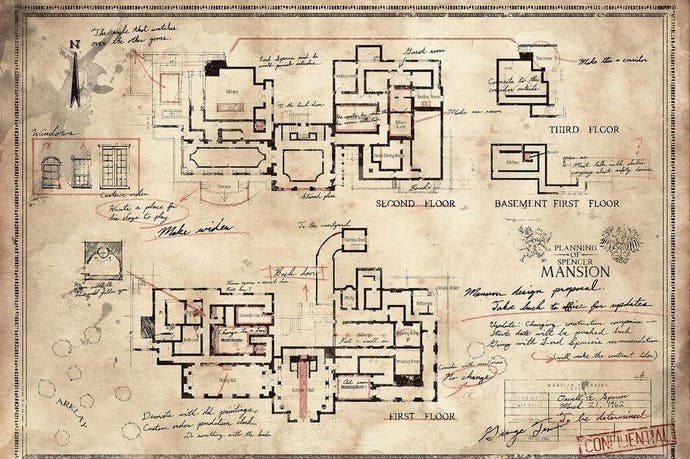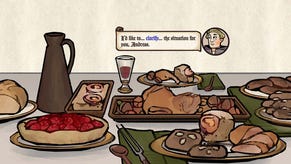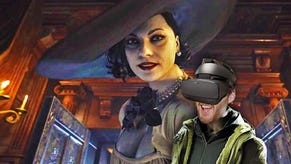The hidden echoes of Resident Evil 7's remixed house
The house that ate itself.
Editor's note: Heterotopias is a new zine that looks at the intersections between video games and architecture, and I'm delighted to welcome its editor Gareth Damian Martin to Eurogamer for the first of a series of regular articles exploring the same territory. You can pick up the latest issue of the zine over here, and I strongly recommend you do so as it's a rather lovely thing.
Have you ever thought about how one house becomes another? This may sound like a strange idea, and yet it happens all the time. For those of us living the eternal intransience of a lifetime of rented accommodation, our houses are something we carry with us. A growing collection of objects, technology, furniture and even people picked to fit one place, but that we drag with us from apartment to apartment, slotting them as best we can into the odd geometries of the new rooms we find around us. Look around you, how many different houses has this current configuration of objects been? How many houses will it be?
That line of thought was one that became fixed in my head as I looked at the photograph of the original Resident Evil's Arklay Mountains surreptitiously placed in the main hall of Resident Evil 7's Baker house. At first I almost dismissed it as a crude, immersion-killing easter egg, like a big ugly wink plastered to the wall. Then my mind switched to world-building as I started totting-up dates and details in my head, trying to invent the kind of ornate theories of intersecting fictional timelines that fan forums ticking over for years. But no, this was something else. I almost started to think of it as a window. After all, in the fabricated reality of games, impassible windows and paintings or photographs are much the same. Both are barriers that reveal something other. This one seemed to show the exterior of the house, not a literal exterior, but the symbolic waves of boundless forest that shored-up the walls of this house and of Resident Evil's Spencer Mansion too, a green sea of trees that might stretch from the Arklay Mountains all the way down to whatever Bayou rathole I found myself in now.

How did the Spencer Mansion become the Baker House? Across all these years, from the halcyon days of 1996 when we first entered the survival horror to being welcomed home to the Baker's mutated family life. I suppose you might be thinking it didn't, that these are two totally different spaces, connected by a single series: But the signs are there. Let's start in the very room that holds that Arklay photo, a main hall designed as a remix of the original game's very same. Open up the map and you'll see it overlays beautifully on top of the Spencer Mansion's grand entrance room, despite being flipped. You see, the Spencer Mansion extends up from its entrance to the North, while in its own map the Baker main hall has its entrance in the North, the house stretching behind to the South. And once you begin to match up the wings it starts getting eerie.

Both houses have overlapping dining rooms in their West Wings, with a bar in the Spencer Mansion and a kitchen in the Baker's. Both of these dining rooms have grandfather clocks with puzzles attached. The East Wings, meanwhile, show more points of connection, both sharing a Drawing Room, and almost identically placed Safe Rooms tucked beside staircases. Side by the side the lines of the two maps seem to suggest some ornate intersection, a set of relationships too complex to understand, but too essential to ignore. Other shuffled elements feel almost like hauntings: the broken shotgun puzzle, now in the Main Hall, but with an identical solution; two puzzles that requires you to empty out ominously murky bathtubs; two trips to rotting basements. And in perhaps the most ornate touch, Resident Evil 7's quest to gather three metal dog's heads to open up the Baker's front door. A three-headed "Cerberus" if you will, the same name given to the original game's zombie Dobermans. In a strange moment of reverse continuity you'll even see, if you open the front doors of the Spencer Mansion in the 2002 Gamecube remake of Resident Evil you'll find exactly three dogs, waiting patiently for you to let them in.

This is just the beginnings of the echoes. The effect of this architectural frame is its tendency to evoke strange overlays of memory and experience. A long corridor, lined with windows to the outside in Resident Evil 7's Baker House, for example, had me sure something would jump in, just as the zombie dogs did in Resident Evil's infamous jump scare. It was surprise then, when Jack Baker came through the wall on the opposite side, inverting the convention. I can't imagine this was an accident. In fact, from early screenshots that show Resident Evil 7's main hall, with its bridging balcony and moonlit windows, from an identical angle to one of the most iconic images of the Spencer Mansion, to the Crow, Scorpion, and Snake keys, a more southern version of the gothic Sword, Armor and Helmet keys, Resident Evil 7 demonstrates a desire to evoke those flickering architectural echoes. Even the yellow wallpaper, wood cladding, and cast iron lighting fixtures, all of which evoke the almost unsettlingly plain graphics of the PS1 original, seek to mirror, twist and suggest recognizable details without precisely mimicking them.

This might sound like a painfully nostalgic approach, or a retreat into a recognizable iconography to sell the game to aging fans, but in reality it is something else entirely. This reconfigured Spencer Mansion, remixed, remade and renamed the Baker house, is not a copy but an architectural study. It wouldn't surprise me if Resident Evil 7's level designers began their process by anatomizing the original game's strange architectural traits, so academic is their knowledge of its subtleties. In architecture there is nothing new about this idea: there's barely a domed library, museum, university, monument of church in Western Europe or America that isn't a remaking of ancient Rome's Pantheon. This is the way architecture goes from a historical edifice to a generational project, something that might echo through the years as a continual process of reference and recursion.

Yet with Resident Evil, that series most at home in its more domestic entries, perhaps a less grand image is required. That's why I want to return to the idea of those ghosts of other houses that follow us through our lives. Game environments, unlike much of the shared institutional architecture of museums, shops, universities and offices we inhabit has a kind of intimacy. Especially in games like Resident Evil, where we pass through and back through a set of spaces over and over again, our eyes always roving across the surfaces for real or imagined secrets, we inhabit these architectures with a certain intensity, a familiarity. Think of the millions who have tracked back and forth through the halls of the Spencer Mansion or the Baker House, their eyes on the corners, the pools of light, the movement of branches against the windows. All of us have shared these houses, lived through their trials and mentally mapped their serpentine corridors. As Gaston Bachelard puts it in his book The Poetics of Space "A house that has been experienced is not an inert box. Inhabited space transcends geometrical space."
This transcendence is exactly what links the Spencer and Baker houses, what allowed one to become the other. Across the sea of forest that might connect the two lie the tracks of every player's experience, every spelunking of these dark domains. Just as with the ghost houses of furniture and objects we carry with us from apartment to apartment, city to city, so we carry the spaces of Resident Evil too. That is what Resident Evil 7 so carefully acknowledges and plays upon, that transmission of videogame architecture through our experience of its forms. So when we find ourselves clomping through a badly lit corridor in search of a missing key, and we get a sudden flash of the same corridor but different, somewhere else, conveyed by other means, we might find ourselves returning, for just a moment, home.
















.png?width=291&height=164&fit=crop&quality=80&format=jpg&auto=webp)
